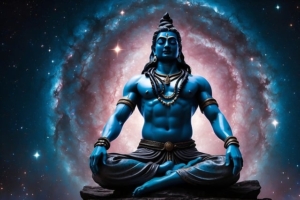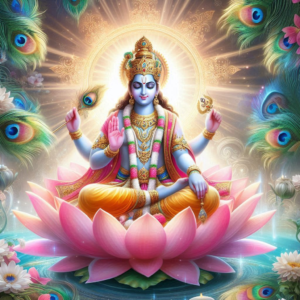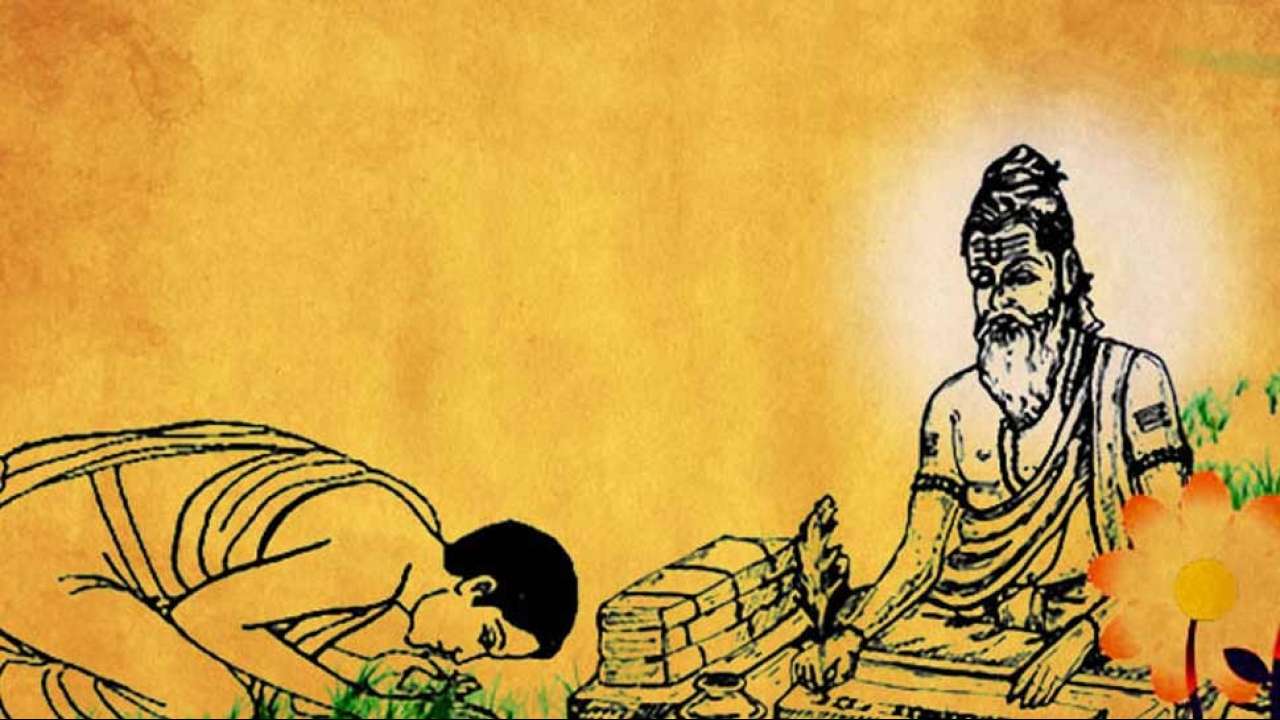The first full moon day after the end of the summer solstice is celebrated as Guru Poornima. The significance of this day is paramount. Let us take a walk down history to see the numerous significant events that occurred on this day.
Guru Poornima is celebrated by Hindus, Jains and Buddhists alike. On this auspicious day, Vyasa Rishi was born. Vyasa Rishi was the one who segregated and compiled the ancient teachings into four Vedas. Hence, he came to be known as Veda Vyasa. This full moon is also known as Vyasa Poornima, in his honor. Buddhists celebrate this day, as it was the first time Buddha gave a sermon after He attained self-realization. He addressed his disciples for the first time on this day, at Sarnath, Uttar Pradesh. Mahavira, the 24th Teerthankara of Jain tradition, initiated His first disciple on this day, making it of immense significance for Jains.
 Predating all of this, the yogic lore remembers this full moon as the day when Lord Shiva became the Adi Guru (First Guru) to Sapta Rishis. Lord Shiva is the only being to have made the journey from I to divine numerous times, having explored innumerable possibilities for the same journey. When Sapta Rishis approached Him asking to share this experience of bliss, out of sheer compassion, He initiated them as His disciples on this very day. He shared with them the various ways that a human can transform his inner reality to experience himself as the God within. He then ordered them to share this knowledge with all of humanity, to spread it to all corners of the world.
Predating all of this, the yogic lore remembers this full moon as the day when Lord Shiva became the Adi Guru (First Guru) to Sapta Rishis. Lord Shiva is the only being to have made the journey from I to divine numerous times, having explored innumerable possibilities for the same journey. When Sapta Rishis approached Him asking to share this experience of bliss, out of sheer compassion, He initiated them as His disciples on this very day. He shared with them the various ways that a human can transform his inner reality to experience himself as the God within. He then ordered them to share this knowledge with all of humanity, to spread it to all corners of the world.
A human being is nothing but a possibility. A possibility to make the journey from ‘Identity (I)’ to ‘Divinity’. This possibility brings with it numerous opportunities. One such opportunity is the day of Guru Pooornima. This full moon brings with it a unique opportunity to align oneself to receive divine grace. The energies of this day are conducive to receive an abundance of grace and blessings. The compassion of a Guru knows no limits. When a disciple learns to surrender completely and become a receptacle for knowledge, he opens himself to infinite possibilities and blessings from his Guru. The biggest opportunity that this full moon presents to a human being is for ‘Surrender’.
In order to be able to surrender, it is first important to understand who a ‘Guru’ is and who He is not. The word ‘Guru’ is derived from 2 Sanskrit roots, ‘Gu’ & ‘Ru’. Gu means darkness, Ru means he who dispels it.
गुशब्दस्त्वन्धकारः स्यात् रुशब्दस्तन्निरोधकः।
अन्धकारनिरोधित्वात् गुरुरित्यभिधीयते॥ १६॥
— Advayataraka Upanishad, Verse 16
However, this meaning too has been contorted and misunderstood by many. A Guru is not someone who will bestow you with grace that would instantly make you peaceful, blissful and gift a life free from challenges. A Guru’s role is much more profound than just bestowing boons or making an individual’s life easier. Instead, a true Guru is a concept that is beyond identity. A real Guru is one who has no identity left of His own, all that remains in Him is pure divinity and his compassion for disciples. Only when an individual transcends his own identity and becomes an epitome of divinity and compassion, does he make his own journey from being a shishya to a Guru. Such a Guru knows that his role in his disciple’s life is not make the disciple dependent on him for eternity. Instead, his role is to help the disciple experience his own divinity within. Hence, Guru is the one who will consistently, with immense patience and compassion, guide a disciple to go within himself, to explore the infinite possibilities that lie within. He won’t ease out the challenges that a disciple faces in his human birth, rather He will train the disciple to overcome his own challenges. He won’t take a disciple from ‘Identity’ to ‘Divinity’ merely through surrender and prayer. He will help the disciple make that journey with complete awareness, as that is the only way to true liberation.
Lord Shiva, the Adiguru, is nothing but awareness personified. He has shown us the path, through various techniques, to make this journey to our inner divinity. Just as Lord Shiva is known as the Adiguru, Lord Vishnu is known as ‘Jagadguru’.  He is the Lord of the materialistic plane, one of the chief deities of the ‘Bhakti Marga’ (the path of devotion). For a spiritual seeker, it is equally important to seek Lord Vishnu’s blessing as well. There is a significant reason for this. The journey from ‘I’ to ‘Divine’ has to be made by a soul in the human birth only. This human birth, for most people, takes place in society, in the midst of materialism. In today’s day and age, renunciation is not necessarily the only path to salvation. Gone are the days when one was expected to renounce the world and go to Himalayas to seek the Lord or experience inner divinity. As is evident around us, there are many spiritual masters in today’s world who are married, have a family and have still touched peaks of inner ecstasy. In order to make this shift from materialism to inner divinity, to make spirituality a way of life, the grace and blessings of Lord Vishnu is equally important. Many people think Lord Shiva’s path is that of a renunciate and Lord Vishnu’s path is that of materialism, and hence mistake them to be mutually exclusive. However, such is not the case. The time is now ripe to be able to walk on both these paths and balance them simultaneously. Being in and of the materialistic world, and yet being tuned to the divinity within is the true meaning of being spiritual. In order to achieve this, the grace and blessings of Lord Shiva and Lord Vishnu are both equally important.
He is the Lord of the materialistic plane, one of the chief deities of the ‘Bhakti Marga’ (the path of devotion). For a spiritual seeker, it is equally important to seek Lord Vishnu’s blessing as well. There is a significant reason for this. The journey from ‘I’ to ‘Divine’ has to be made by a soul in the human birth only. This human birth, for most people, takes place in society, in the midst of materialism. In today’s day and age, renunciation is not necessarily the only path to salvation. Gone are the days when one was expected to renounce the world and go to Himalayas to seek the Lord or experience inner divinity. As is evident around us, there are many spiritual masters in today’s world who are married, have a family and have still touched peaks of inner ecstasy. In order to make this shift from materialism to inner divinity, to make spirituality a way of life, the grace and blessings of Lord Vishnu is equally important. Many people think Lord Shiva’s path is that of a renunciate and Lord Vishnu’s path is that of materialism, and hence mistake them to be mutually exclusive. However, such is not the case. The time is now ripe to be able to walk on both these paths and balance them simultaneously. Being in and of the materialistic world, and yet being tuned to the divinity within is the true meaning of being spiritual. In order to achieve this, the grace and blessings of Lord Shiva and Lord Vishnu are both equally important.
Upon understanding the significance of this auspicious day of Guru Poornima, let us all surrender ourselves completely to our Guru and seek his grace to complete this journey from ‘Identity’ to ‘Divinity’.


There are no comments